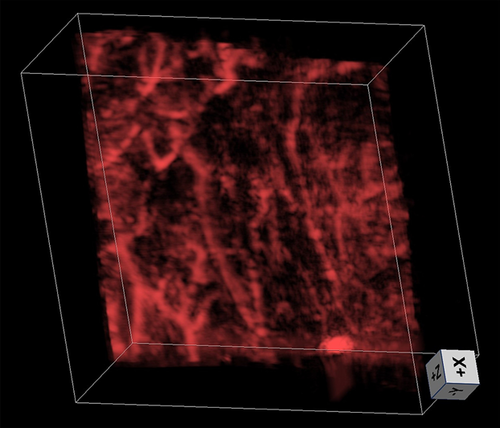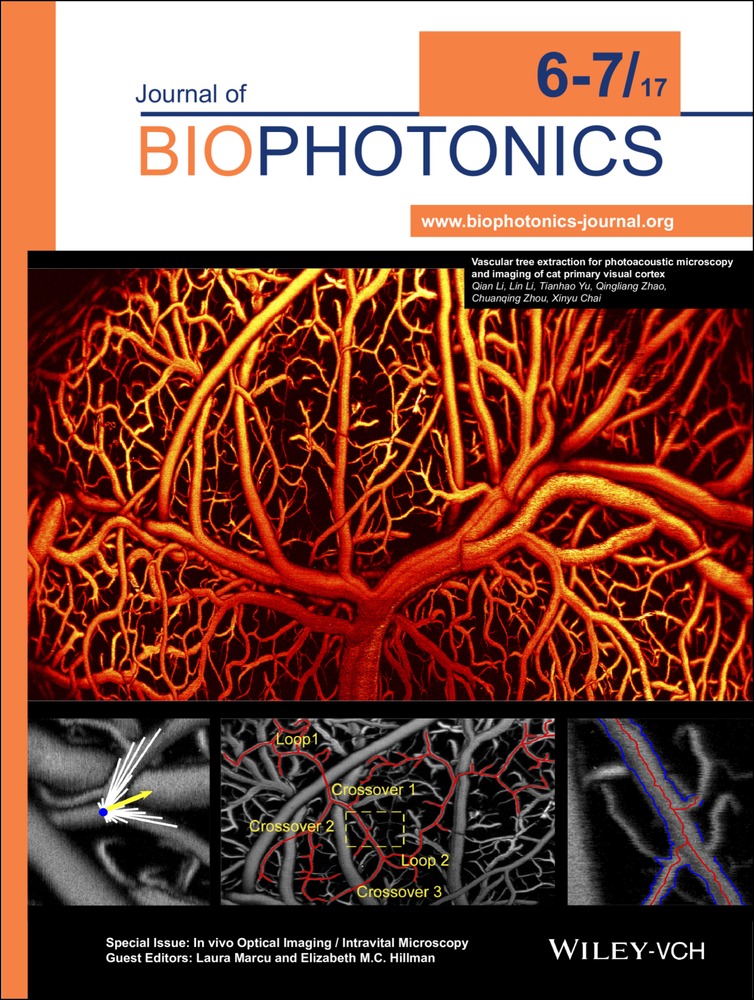Second generation slit-based photoacoustic tomography system for vascular imaging in human
Abstract
Slit-based photoacoustic tomography is a newly developed technique that improves the elevation numerical aperture of a linear array through acoustic diffraction. The slit, placed at the acoustic focus of a linear array, effectively forms an array of virtual detectors with high receiving angle, which subsequently improves the elevation resolution. However, due to the complex implementation, our original system could only image phantoms and sacrificed animals. In this report, the system has been significantly improved. In particular, we designed a slit holder that can be directly mounted to the transducer array for easy adjustment of slit width and simultaneous scanning of both the array and the slit. To enlarge the imaging field of view, we replaced the single circular optical fiber bundle with a bifurcated line fiber bundle which moved simultaneously with the array and the slit. The data acquisition system has also been updated to double the imaging speed. With these improvements, the new system can image a 3.8 × 4 cm2 region within 40 seconds and the object only needs to be coupled through ultrasound gel. We successfully used the system to image vasculatures in the palm and forearm of human volunteers.





